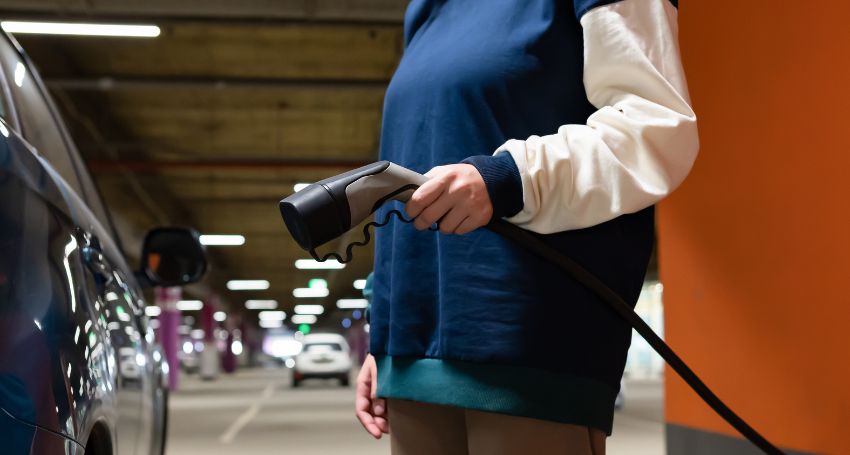
Switching to an electric vehicle (EV) is an excellent way to reduce carbon emissions and save on fuel costs. However, when buying a used electric vehicle, one of the most critical factors to consider is battery health. The battery is the heart of an EV, determining its range, performance, and longevity. This guide will help you understand how to check battery health, the key factors affecting it, and how to make an informed decision when buying a used EV.
What is Battery Health and Why is it Important?
Battery health refers to the condition of an EV’s battery over time. Since electric vehicles rely on lithium-ion batteries, their performance naturally degrades due to charging cycles, usage patterns, and external factors like weather conditions. A battery with poor health can result in reduced range and higher maintenance costs.
When buying a used electric vehicle, understanding the battery’s health ensures you’re getting a reliable car that still provides a decent driving range.
How to Check Battery Health in a Used EV?
Before purchasing a used electric car, conducting a battery health check is crucial. Here are a few ways to assess the condition of the battery:
1. Check the Battery’s State of Charge (SOC)
The state of charge (SOC) indicates how much energy remains in the battery. A healthy battery maintains consistent charge levels across cycles.
2. Use Diagnostic Tools
Diagnostic tools, such as OBD-II scanners or manufacturer-specific EV health checker apps, provide valuable information about the battery’s condition, degradation levels, and performance.
3. Look for Battery Health Data
Some automakers provide battery health data that show degradation trends over time. This information is valuable when evaluating a used EV.
4. Perform a Test Drive
Taking the car for a test drive helps assess how the battery pack performs under real driving conditions. Watch for any inconsistent range estimates or sudden drops in charge.
Factors That Affect an EV’s Battery Health
Several factors contribute to battery degradation in an electric car. Understanding these can help determine how much life remains in the battery:
1. Charging and Discharging Patterns
Frequent fast charging and deep discharges accelerate battery degradation. A battery management system (BMS) helps regulate charge levels to optimize longevity.
2. Mileage and Age of the Vehicle
High-mileage used EVs often show greater battery degradation. However, mileage alone doesn’t define battery health; a well-maintained high-mileage EV could still have a healthy battery.
3. Weather Conditions
Extreme temperatures, check if hot and cold weather can impact battery performance. Regions with extreme climates often see faster battery degradation.
4. Battery Management System (BMS) Efficiency
A battery management system monitors battery conditions and ensures optimal performance. A car with a well-functioning BMS is likely to have better long-term battery health.
How to Interpret an EV’s Battery Health Report?
A battery health report provides an overview of the battery capacity, state of charge, and degradation level. Here’s how to read it:
- Battery Capacity: This shows how much energy remains compared to when the car was new. A battery with 80% capacity retains 80% of its original range.
- State of Charge (SOC): Indicates how much energy is left in the battery.
- Battery Degradation: This shows how much the battery has degraded over time. A gradual decline is normal, but rapid drops indicate potential issues.
Ways to Check a Used EV’s Battery Health Before Buying
1. Fully Charge the Battery and Observe the Estimated Range
A good way to gauge the battery’s health is to fully charge the used electric car and compare the displayed estimated range with the original manufacturer’s specifications.
2. Use a Diagnostic Scan Tool
Many modern EVs allow diagnostic scans to check battery health data. Apps like EV Health Checker can provide valuable insights into the health of an electric car’s battery.
3. Observe Battery Performance Across Charges
A battery pack with inconsistent charge cycles, significant internal resistance, or erratic state of charge levels may indicate degradation.
How to Extend the Life of a Used EV’s Battery?
If you’re buying a used electric car, you’ll want to maintain its battery health for as long as possible. Here are some tips:
- Avoid frequent fast charging while convenient, fast charging increases battery wear over time.
- Keep the state of charge according to the 20-80% rule, Avoid full discharges and charges whenever possible.
- Park in shaded or temperature-controlled areas, Extreme temperatures can shorten battery life.
- Use manufacturer-recommended charging practices, Following proper charging protocols ensures long-term battery efficiency.
What Happens When a Used EV’s Battery Degrades?
When an EV’s battery degrades, it experiences:
- Reduced driving range – A lower battery capacity means fewer miles per charge.
- Longer charging times – Older EV battery packs may take longer to reach full charge.
- Potential costly replacements – Battery replacement costs can be high, making it crucial to assess the condition of the battery before purchasing.
Who Can Help You Check Battery Health in a Used EV?
When buying a used EV, a professional assessment is recommended. Here’s who can help:
- Certified mechanics specializing in EVs – They can conduct a battery health check and inspect other components.
- EV dealerships – Some dealerships provide battery diagnostics before selling a used EV.
- AutoTrader and other platforms – Websites like AutoTrader and review platforms provide insights into the latest vehicle reviews to help you compare models.
Conclusion
When buying a used electric vehicle, battery health should be at the top of your checklist. A well-maintained battery means better range, reliable performance, and lower long-term costs. By using diagnostic tools, checking manufacturer data, and consulting EV professionals, you can make a smarter, more informed purchase. As EV adoption grows, knowing how to assess and maintain battery health will help you get the most value and longevity out of your electric car.



